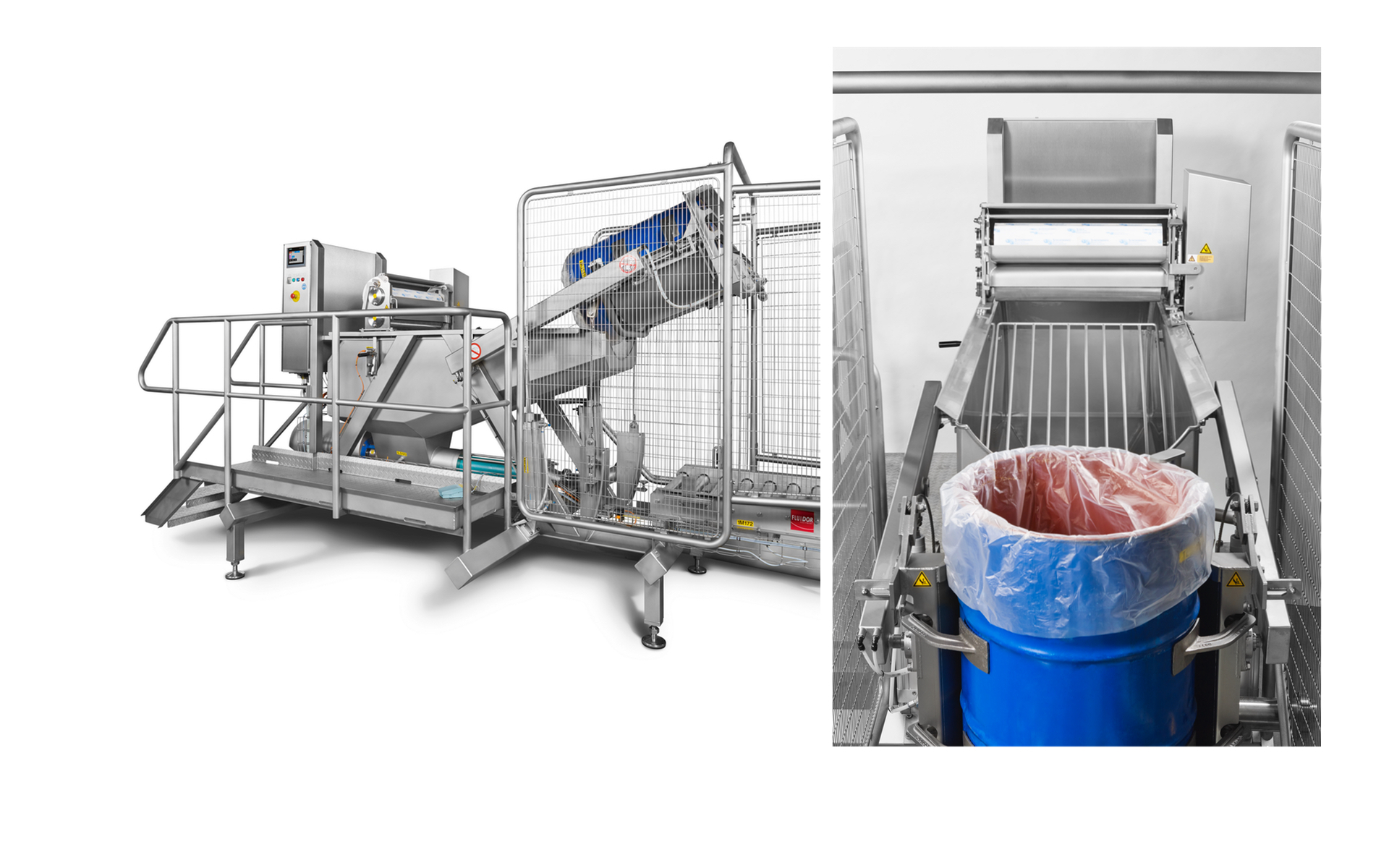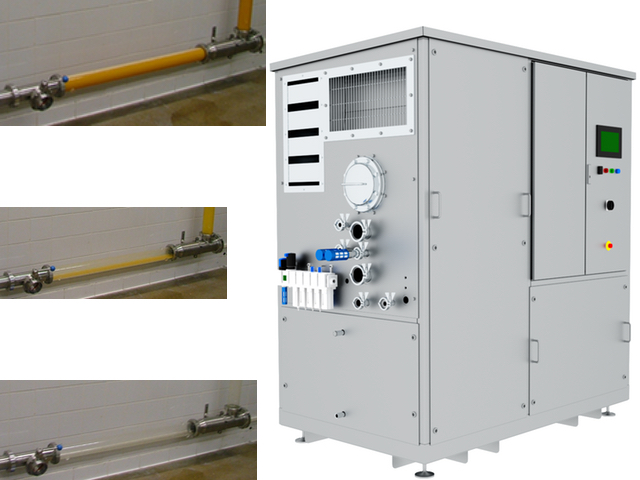Cleaning and disinfection
A general description of several ways of cleaning are given. Cleaning starts with emptying the equipment, followed by Cleaning in place, Washing in place, Cleaning out of place or by jetting open equipment and environment. A number of cleaning agents are mentioned.
Objective
In the food, drink and milk industry, the processing equipment and production facilities are cleaned and disinfected periodically, also in line with legal requirements. The frequency of doing this can vary considerably according to the products and processes. The aim of cleaning and disinfection is to remove product remnants, other contaminants and microbes from the foregoing process run. The conditions and frequency are selected so as not to contradict any legal requirements.
Field of application
Whole of the food industry.
Techniques, methods and equipment
Before starting the cleaning process, equipment is emptied as far as possible. Cleaning and disinfection can be carried out in various ways. Traditionally, it has been corned out manually. Cleaning In Place (CIP), Wash In Place (WIP) and Clean Out of Place (COP) are all expressions used for different modes of cleaning.
COP is used when several of the machine's components need to be dismantled, usually before the manual or automated cleaning of the machine is started. The dismantled components will then be cleaned separately outside the machine, hence COP. Forming machines are examples of this and components like augers, pistons and forming plates seals all have to be dismantled/disassembled before cleaning these components, as well as the rest of the machine. Another example is a piston filler with rotary valves: The valves have to be dismantled and manually cleaned while an automatic system cleans the rest of the machine. High-pressure jet cleaning, using gels and foaming can all be done manually or automatically. The individual cleaning method is an appropriate combination of cleaning factors such as solvent (water), temperature of cleaning solution, cleaning agents (i.e. chemicals) and mechanical forces. Manual cleaning means that the equipment to be cleaned is taken apart and manually cleaned (brushed) in a cleaning solution. Only mild conditions, with regard to temperature and cleaning agents, can be used.
CIP is used especially for closed process equipment and tanks, either stationary or mobile (i.e. for small process units). The cleaning solution is pumped through the equipment and distributed by sprayers in vessels, tanks and reactors. The cleaning programme is mostly run automatically. The following steps can be distinguished: pre-rinse with water, circulation with a cleaning solution, intermediate rinse, disinfection, and final rinse with water. In automatic CIP-systems, the final rinse-water is often re-used for pre-rinsing or may be recycled/re-used in the process.
In CIP-cleaning, high temperatures (up to 90°C) are used, together with strong cleaning agents. The CIP systems used for open systems like freezers are almost automatic, except for some dry clean-up and opening of hatches. Temperatures here are normally below 50°C and the pressure is 10 to 15 bar ('medium pressure systems`). In high pressure jet-cleaning, water is sprayed at the surface to be cleaned at a pressure of about 40 to 65 bar. Cleaning agents are injected in the water, at moderate temperatures up to 60°C.
An important part of the cleaning action takes place due to mechanical effects. In foam cleaning, a foaming cleaning solution is sprayed on the surface to be cleaned. The foam adheres to the surface. It stays about 10 to 20 minutes on the surface and is then rinsed away with water. Foaming can be done both manually and automatically. Besides the foam cleaning there is also a technique using “gel”.
High-pressure jet cleaning and foam cleaning are generally applied for open equipment, walls and floors. In some cases, cleaning is done using only hot water, however, cleaning agents are normally used in the food, drink and milk industry. Cleaning agents are alkalis (sodium and potassium hydroxide, metasilicate, sodium carbonate), acids (nitric acid, phosphoric acid, citric acid, gluconic acid), composed cleaning agents containing chelating agents (EDTA, NTA, phosphates, polyphosphates, phosphonates), surface-active agents, and/or enzymes.
For disinfections (sanitisation) various disinfectants can be used, such as hypochlorites, iodophors, hydrogen peroxide, peracetic acid and quaternary ammonium compounds (QACs). In some cases, cleaning is done using only hot water, however, this depends on the nature of the product and process. Cleaning agents are delivered in bags (powdered cleaning agents), drums or sometimes bulk tankers. All required safety precautions need to be taken into consideration when handling and storing cleaning agents.
Fluidor Equipment
Fluidor Equipment Ltd. is a Dutch machine building company with a leading position on the global market for drum handling and intermediate bulk container handling systems.
Fluidor Equipment supplies customers in 75 countries with proprietary systems that are widely used to handle, defrost and empty intermediate bulk containers containing food products like frozen fruit juices, concentrates, honey and tomato paste. The Fluidor drum handling systems optimize production efficiency while minimizing the need for manual work forces.
Efficient and profitable
The foundation of the current success of Fluidor Equipment Ltd. was created in the seventies, when the company was approached by a local producer of fruit juices to develop a machine that would help to empty barrels containing frozen fruit juice concentrates. Cees Kuijper, International Sales Manager Fluidor Equipment: “In those years, the barrels used to be emptied by hand. That was a time-consuming, labor-intensive and unhygienic process. Our first drum handling systems that could safely pick up and automatically empty the barrels became an instant success and opened doors to the international food industry. Obviously, our handling systems have become a lot more efficient since those early years.”

Product Recovery with Fluivac: clean and sustainable, preserving product
Modern industrial food industries demand for safe, reliable, user-friendly and sustainable systems that are also easy cleanable. Additionally, food producing companies want to minimize product loss. By developing a new system for the automatic emptying of closed production process tubes, Fluidor Equipment managed to create a new global product recovery standard.

Kuijper: “When exclusively applying conventional CIP-techniques, the products that remain in the pipelines is irrevocably lost. Not so with Fluivac, that comprises of an intelligent central control unit that can be coupled with any existing production tubes. The unit starts up a product recovery process, generating spinning airflows within the tubes that only need a limited amount of water to effectively recover the remaining product while realizing an effective pre-cleaning phase. Fluivac helps you to utilize your food product, time, water and energy resources in the most effective way possible.”
For a comprehensive overview of all Fluidor products and services, please visit: http://www.fluidor.com.